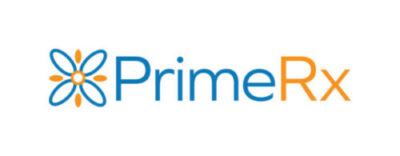The first-ever “Cost of Dispensing Study” released in January 2020 found, on average, that dispensing a specialty prescription drug required 51 minutes. Several time-consuming tasks were completed during those 51 minutes, including “obtaining plan information,” which took 13.3 minutes; “securing patient financial assistance,” which accounted for 16.8 minutes; and “obtaining information for and submitting prior authorization,” which took just over 20 minutes.
While those numbers are specific to specialty drugs (which account for more than half of total pharmacy spending), estimates for dispensing “regular” prescriptions range from 20-to-25-minutes to 10-to-15-minutes.
And with the 2021 NCPA Digest reporting that the typical community pharmacy dispensed 185 prescriptions per day during 2020, it’s easy to see why dispensing-related services account for 65% of a pharmacist’s day. The NCPA Digest also reported a dispensing cost of $10.80 per prescription or just under $2,000 per day.
All this at a time when, as reported in Drug Topics, between 15% and 20% of the prescriptions dispensed by a community pharmacy are “a negative reimbursement at the point of sale.”
But what if there was a way to significantly reduce the amount of staff time spent on the dispensing process? If you could find a way to accomplish the required tasks but in a way that allowed pharmacy staff more time to spend on other patient services, all while reducing dispensing-related costs?
In fact, many pharmacies have accomplished just that by taking advantage of innovations in pharmacy technology management. As in so many other areas, technology has automated – and simplified – labor-intensive pharmacy tasks. Tasks including data entry, prescription validation, inventory access, label generation, formulary lookups, prior authorizations, refill authorization, patient communication, and records management, which can easily account for significant chunks of a pharmacist’s day, can now be handled seamlessly, in a fraction of the time.
The PrimeRx™ solution from Micro Merchant Systems is a good example. PrimeRx™ is a leading pharmacy management system that is widely regarded for its comprehensive capabilities and flexible, customizable features. And because of Micro Merchant Systems’ commitment to continuous improvement, PrimeRx™ is regularly updated, with new functionality added to reflect technological advancements and changing pharmacy needs.
In addition, PrimeRx™ avails itself of innovative third-party solutions that address specific pharmacy needs. Currently, PrimeRx™ users can interface with more than 100 third-party interfaces for added functionality.
With regard to the refill management process, key PrimeRx™ features include:
- User-friendly platform. Busy pharmacists can save time by relying on the system’s extensive use of drop-down menus and intuitive features. This reduces keystrokes, simplifies the process, and in many instances, avoids jumping between screens to access different information sources.
- Comprehensive ordering capabilities
- Refills can be ordered from within a patient’s record.
- Refills can be ordered via a prescription number.
- Refills can be submitted through a bar code scan.
- Medications with no refills remaining
- An alert is sent to the pharmacist if no refills are remaining on a prescription.
- Based on the pharmacist’s response, PrimeRx™ will automatically generate fax or email to the prescriber requesting a new prescription.
- Automated Refill Queue
- All medications ready for renewal are automatically identified, and once approved by the pharmacist, the list moves directly into the refill queue. Once in the queue, labels are generated, and each prescription is prepared for filling.
- The refill queue can be customized based on a pharmacy’s preferences with regard to:
- Scheduled refills for the next 90 days, 180 days, or any other preferred duration.
- Refills scheduled by prescriber.
- Refills scheduled by facility.
- Refills scheduled by insurance company, with expected reimbursement rates listed.
- Refills listed with drug classes identified, to exclude controlled substances.
- Extensive reporting capability. PrimeRx™ allows pharmacy managers to generate customized reports on many topics. A manager may, for example, wish to see a list each morning of refill-eligible prescriptions and identify all patients who have not requested refills. Or a manager may wish to track top-prescribing doctors, high-spending patients, or any other variable. All reports can be programmed to arrive in a pharmacy manager’s inbox at a pre-determined time and frequency.
- Dashboard format. Because pharmacists have limited time to review data, the required information is presented in a dashboard format. Each pharmacy can customize the specific data elements to include on its “at-a-glance” dashboard.
- Interface with Real-Time Prescription Benefit from Surescripts. Pharmacies can integrate directly with the innovative Surescripts solution for critical capabilities that include:
- Real-time visibility into each patient’s drug formulary allows immediate insight to covered medications and out-of-pocket costs.
- Recommendations for therapeutic alternatives that are covered on a patient’s drug formulary.
- Assistance in avoiding medications that require prior authorization. The Real-Time Prescription Benefit solution helps prescribers and pharmacists avoid medications that require time-consuming prior authorizations. Medications that require prior authorization generally include medications not covered by a patient’s plan. Instead, the solution prompts users away from such medications toward alternatives that do not require the extra step.
Clearly, solutions such as PrimeRx™ can have a significant impact in facilitating the pharmacy refill process. Key pharmacy benefits include:
- Reduced dispensing costs.
- Reduced risk of errors.
- More time for pharmacist interactions with patients.
- Increased opportunities for revenue-generating services, including immunization programs, medication therapy management, and counseling.
- Improved staff morale and well-being, as an automated refill process alleviates the time required for dispensing-related tasks.
- Improved performance on critical Star metrics, which will improve pharmacy appeal to payers.
- Improved patient access to medications – and enhanced loyalty.
Pharmacies that have yet to implement an automated refill solution are missing out on a tremendous opportunity to add efficiency – and alleviate a significant burden on their pharmacists’ workload.

